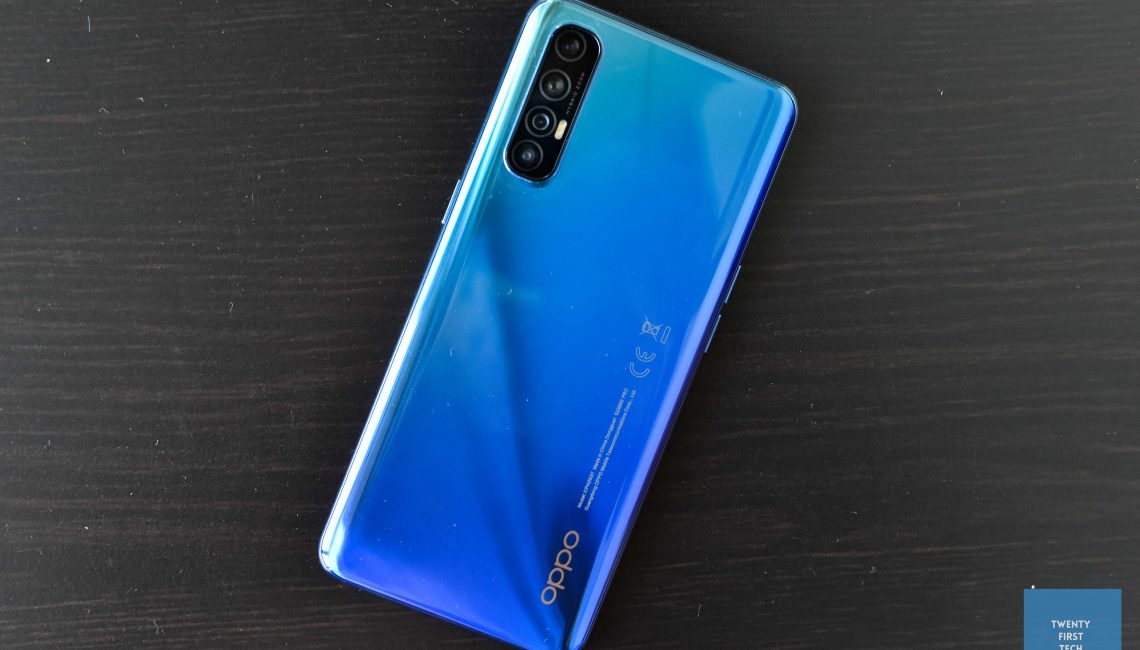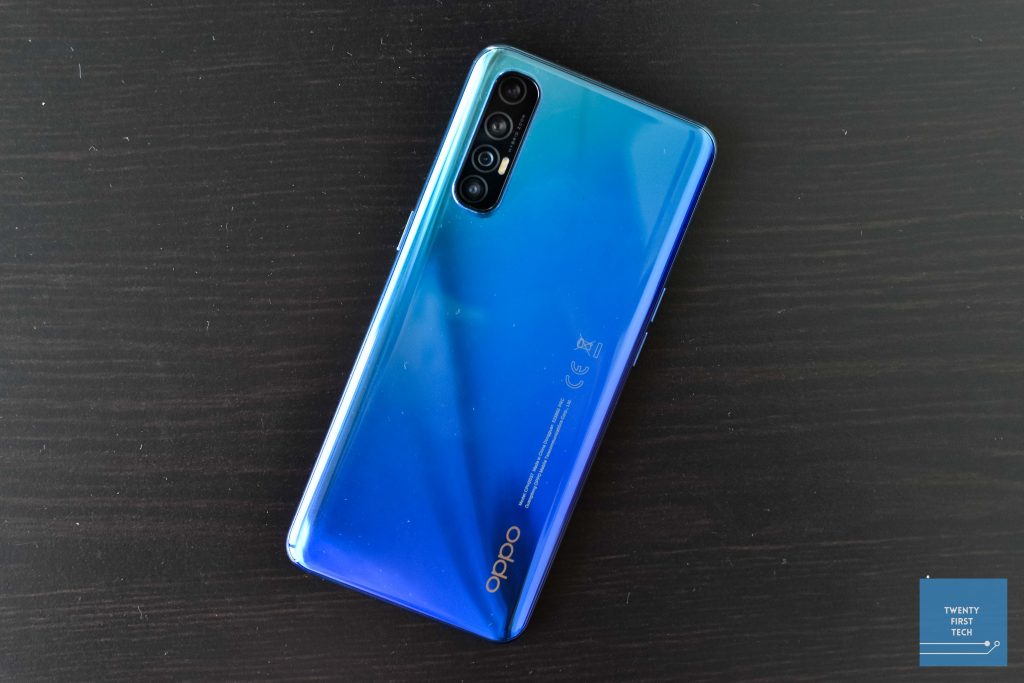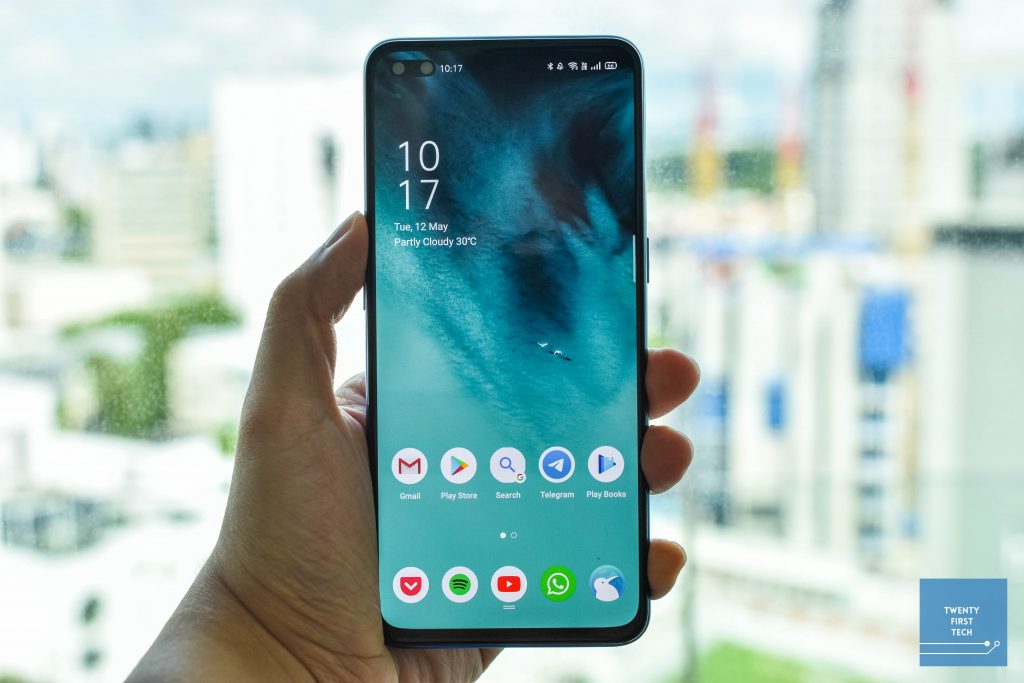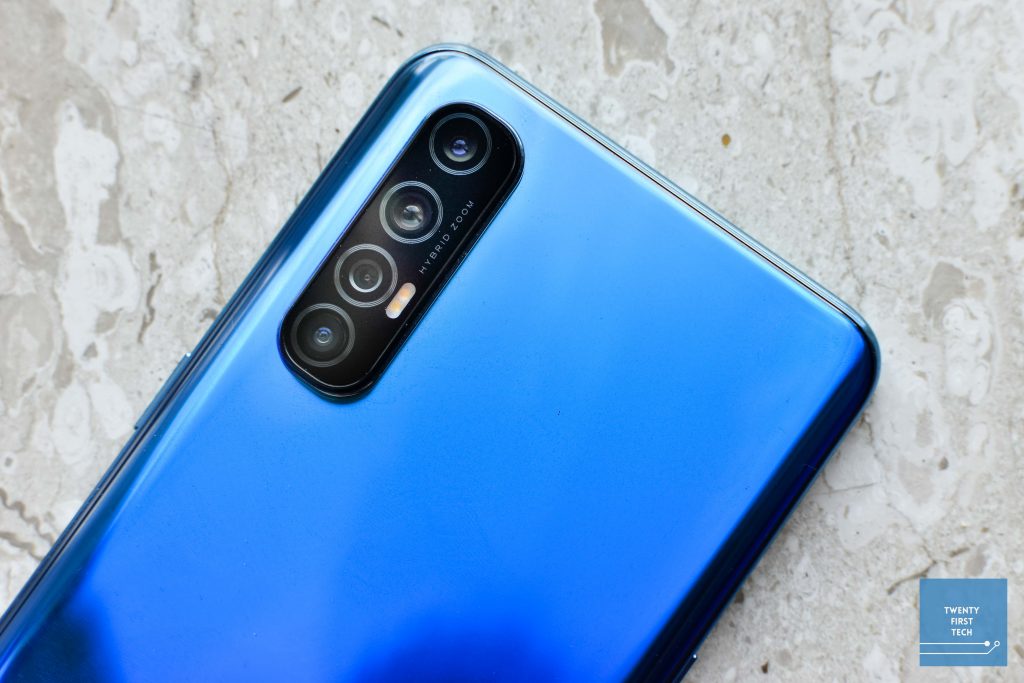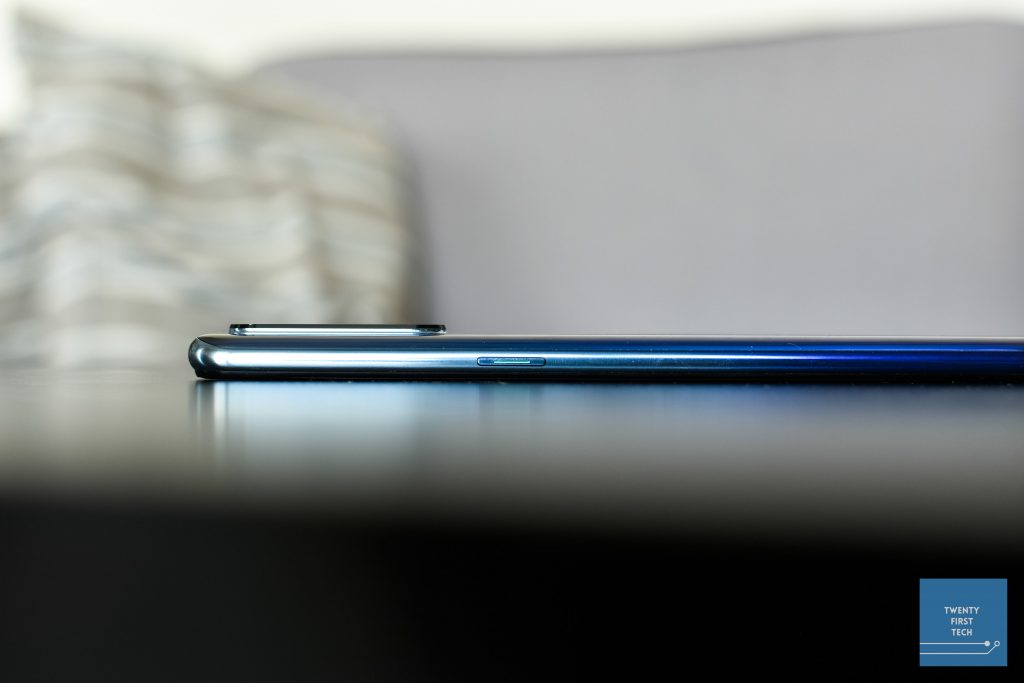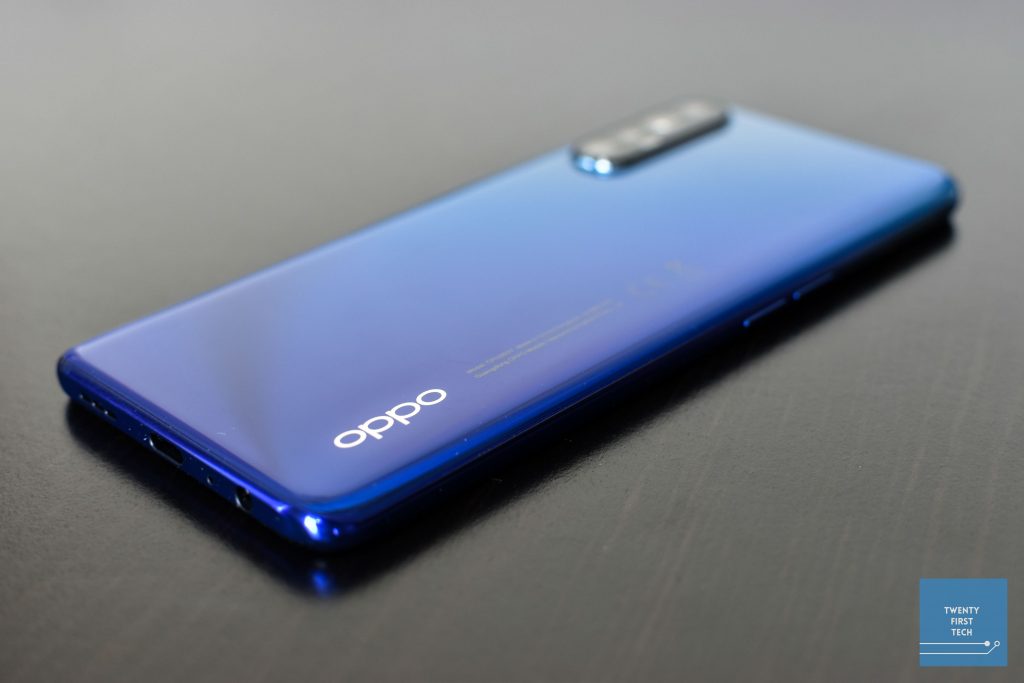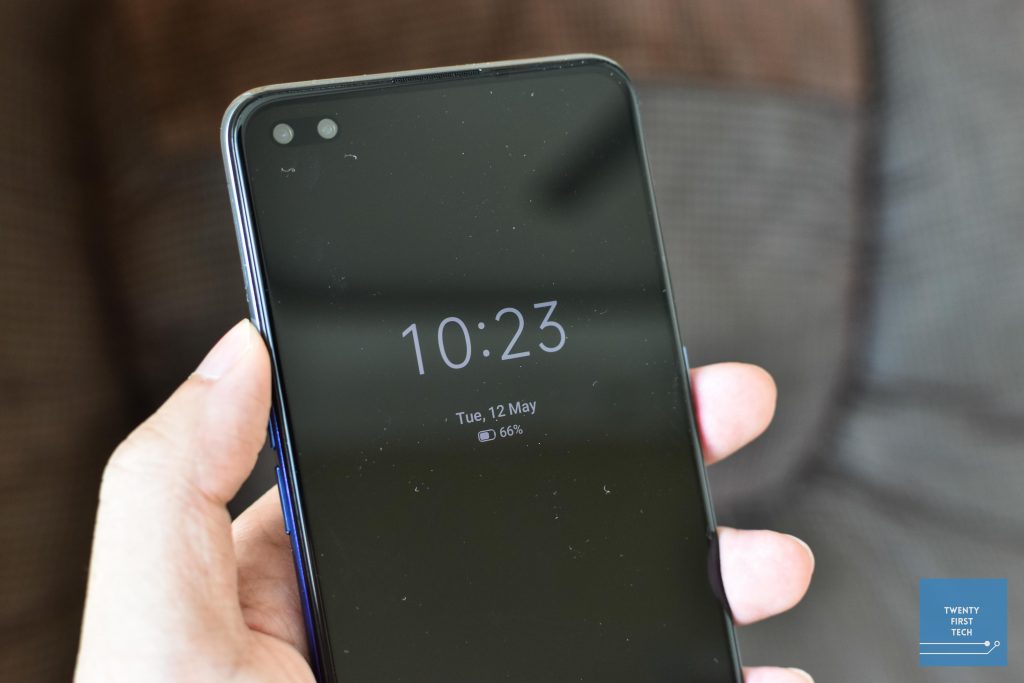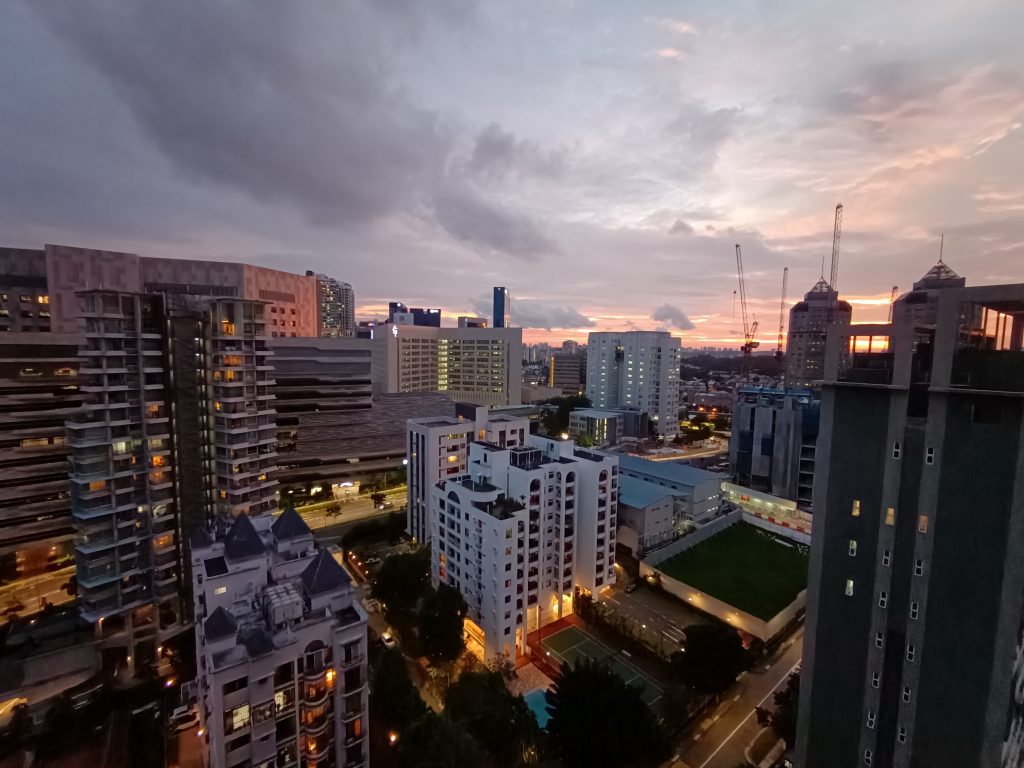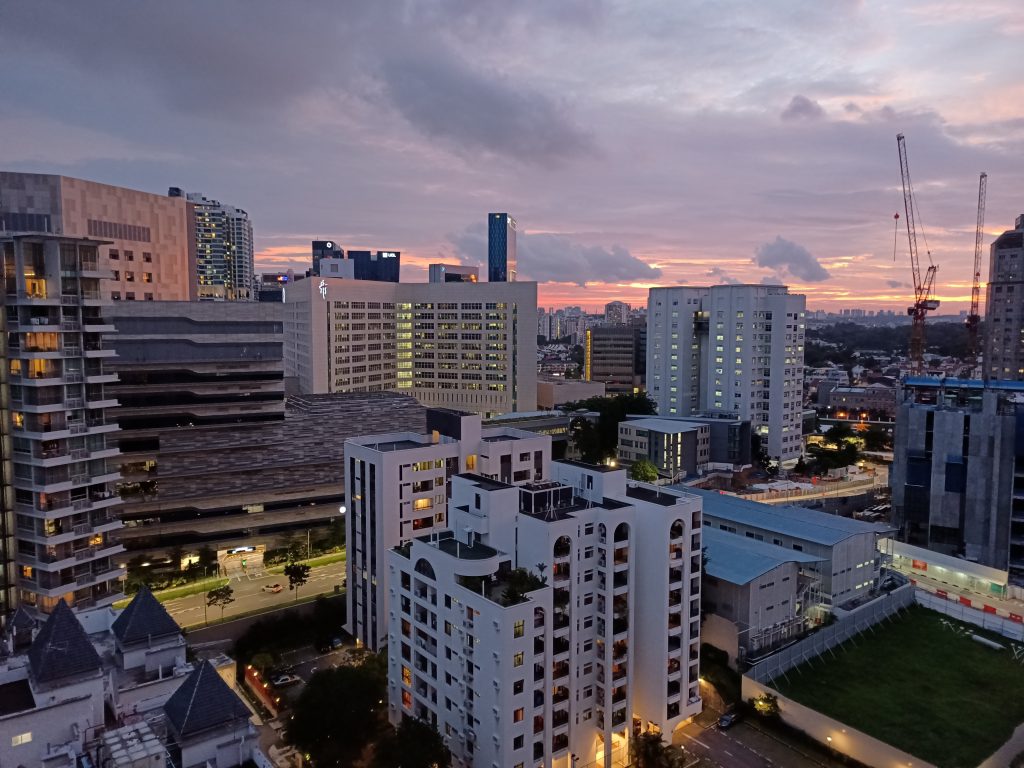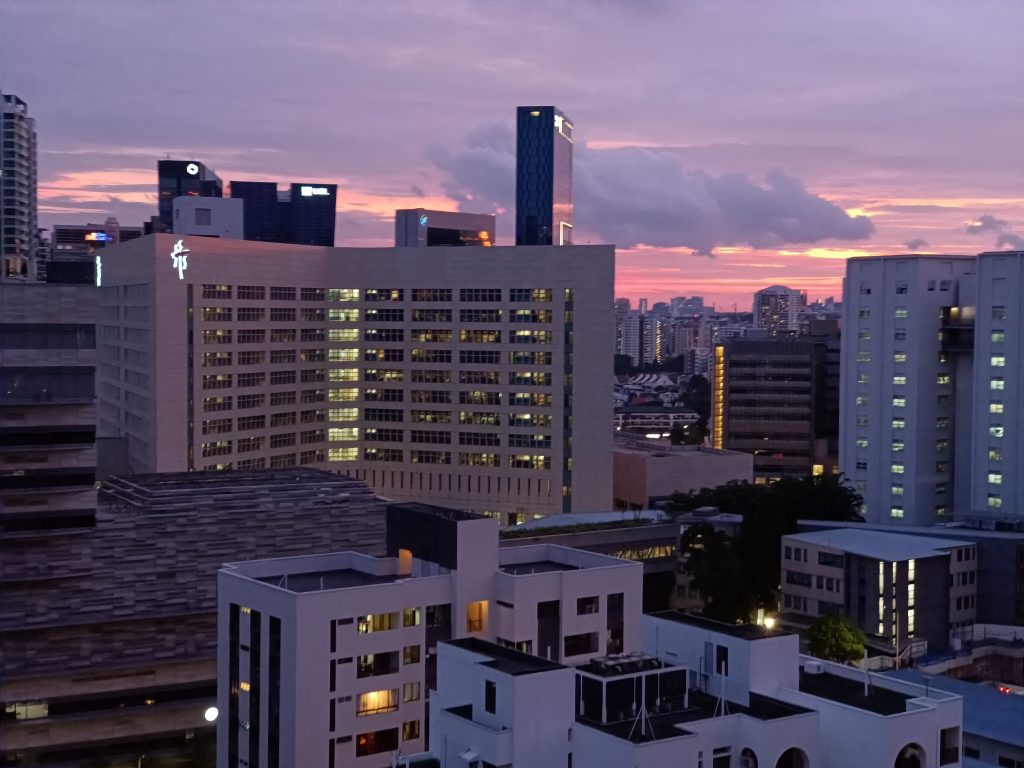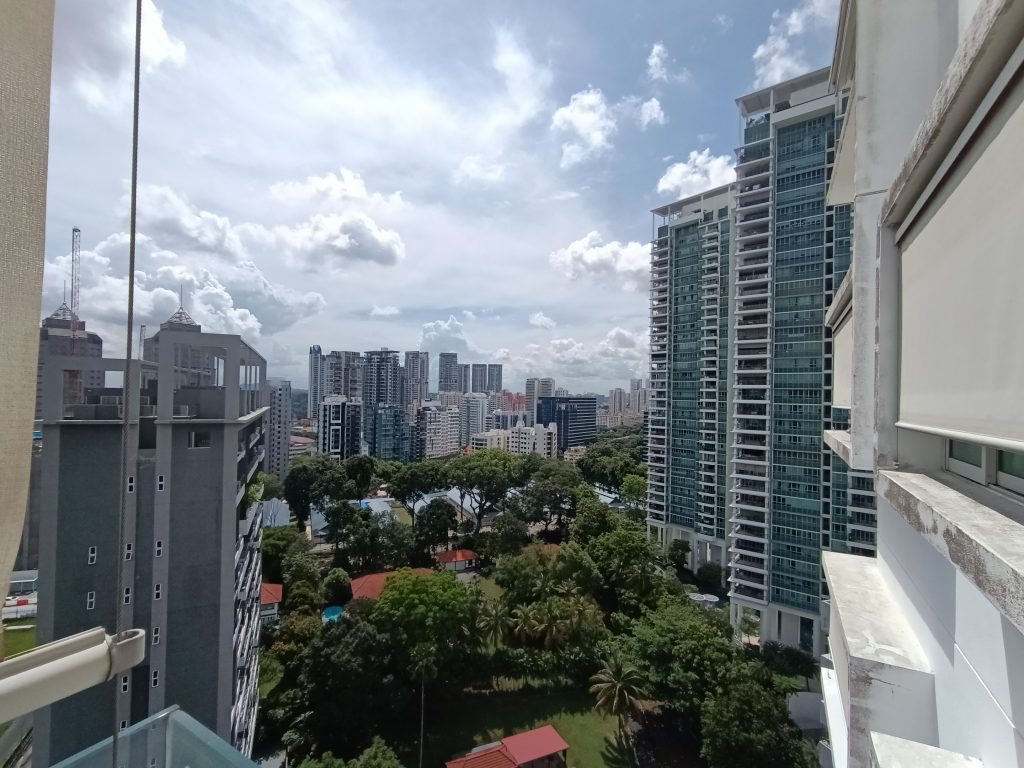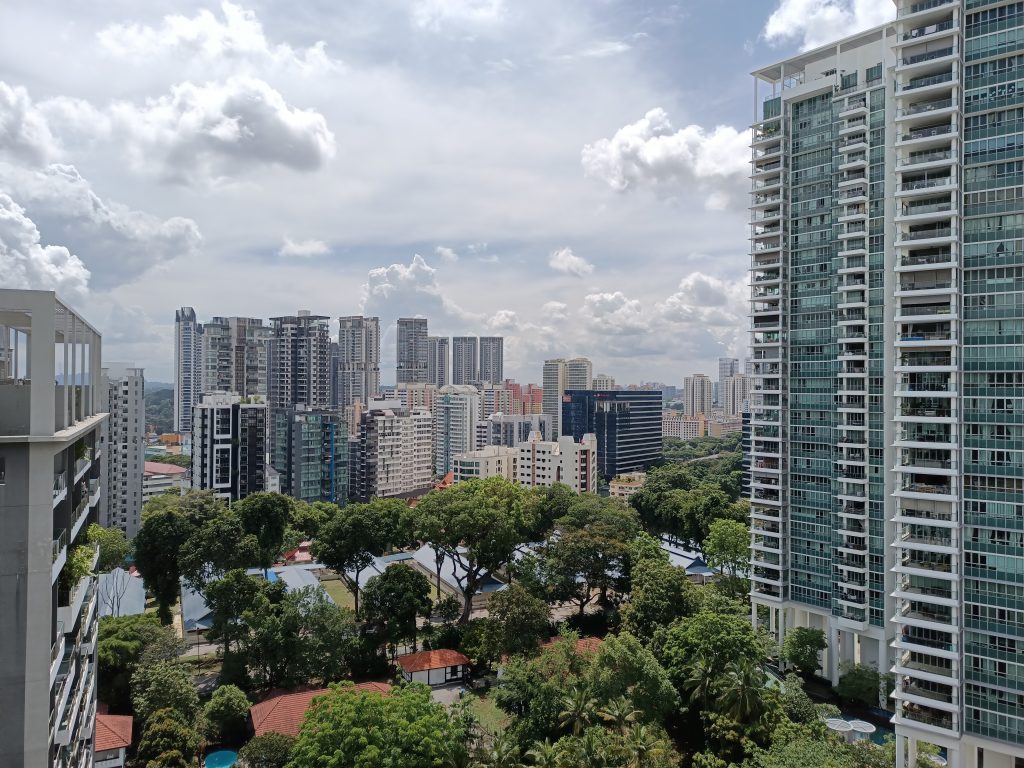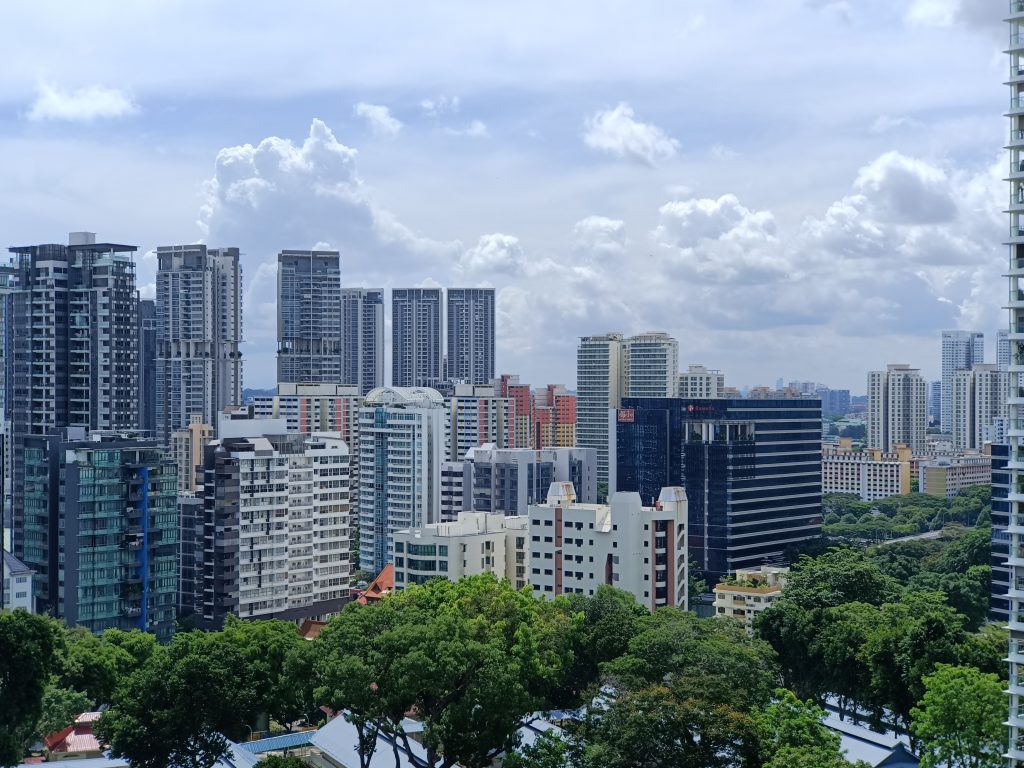I’ve recently returned to Singapore after being overseas for several years, and was surprised to find that the local smartphone market had completely changed. Brands like Sony, HTC and LG have all but disappeared, and the market is now dominated by Chinese brands.
Interestingly, most of these brands — OPPO, Vivo, Realme and OnePlus — are actually from the same parent company. I own a OnePlus 6T as my daily driver, and was disappointed with the high prices of the newly announced OnePlus 8 series. Recently, I reviewed the similarly expensive Huawei P40, but I wanted to pick up a Realme 6 review unit as I’d heard good things about it as the new budget alternative to OnePlus. But a unit wasn’t available, and instead I got the OPPO Reno3 Pro for review.
This is a rather interesting review for me, as it marks the first time that I am reviewing a device from one of these increasingly dominant Chinese players. And for all intents and purposes, to me OPPO, Vivo, Realme and OnePlus are the same company anyway. So it really doesn’t matter which of these brands I encounter first. I simply want to gain insight into the question: are these brands a viable alternative to OnePlus?
More on that after the specs.
OPPO Reno3 Pro Specifications
- Body: Glass front (Gorilla Glass 5), polycarbonate back and frame.
- Screen: 6.4-inch Super AMOLED, 20:9, FHD+ (1080 x 2400px), 405ppi.
- Rear camera: Primary: 64MP, 1/1.72″ sensor size, 0.8µm pixel size, f/1.8 aperture. Ultra wide-angle: 8MP, 1/4” sensor size, 1.4µm pixel size, 13mm, f/2.2. Telephoto: 13MP, 1/3.4” sensor size, 1.0µm pixel size, 2x optical zoom (53mm), f/2.4. Depth sensor: 2MP B/W; 2160p@30fps video recording.
- Front camera:Primary: 44MP, 1/2.8″, f/2.4. 1080p@30fps video recording; Depth sensor: 2MP.
- Chipset: Mediatek Helio P95 (12 nm): Octa-core (2×2.2 GHz Cortex-A75 & 6×2.0 GHz Cortex-A55), PowerVR GM9446.
- Memory: 8/128GB or 8/256GB versions, expandable via microSD.
- OS: Android 10; ColorOS 7.
- Battery: 4,025mAh, VOOC Flash Charge 4.0 30W charging.
- Connectivity: Dual SIM (4G), Bluetooth 5.0, Wi-Fi a/b/g/n/ac, USB-C; 3.5mm audio jack.
- Misc: Under-display fingerprint reader, No NFC.
Glancing through the specs I have several concerns. First is the exclusion of NFC, which seems unacceptable at the asking price of S$749. The second would be the Helio P95 chipset, which is known to have mediocre performance. We’ll see if these concerns are justified soon enough.
Build quality & audio
The first thing that I noticed about the Reno3 Pro when picking it out of the box was that it feels really light. The phone isn’t light by any means; it’s 175g. But for some reason it feels lighter than it actually is. That’s probably due to the plastic construction of the phone, though I was initially fooled into thinking that it was glass.
For a plastic phone, build quality is solid. The unit that I have is the Auroral Blue, and its back is reminiscent of the colourful glass that you see on most phones these days. It looks great. There’s a shift in hue diagonally from the top left to the bottom right, which is a subtle but neat touch.
My main issue with the build, once again, is the large off-center camera bump on the back. The phone wobbles on a tabletop, which is annoying.
One area where you might notice that the phone is plastic is in its buttons. They are tactile and clicky, but feel unmistakably plastic. They wobble slightly in their cutouts and are generally less sturdy than those on phones whose frames are made of metal.
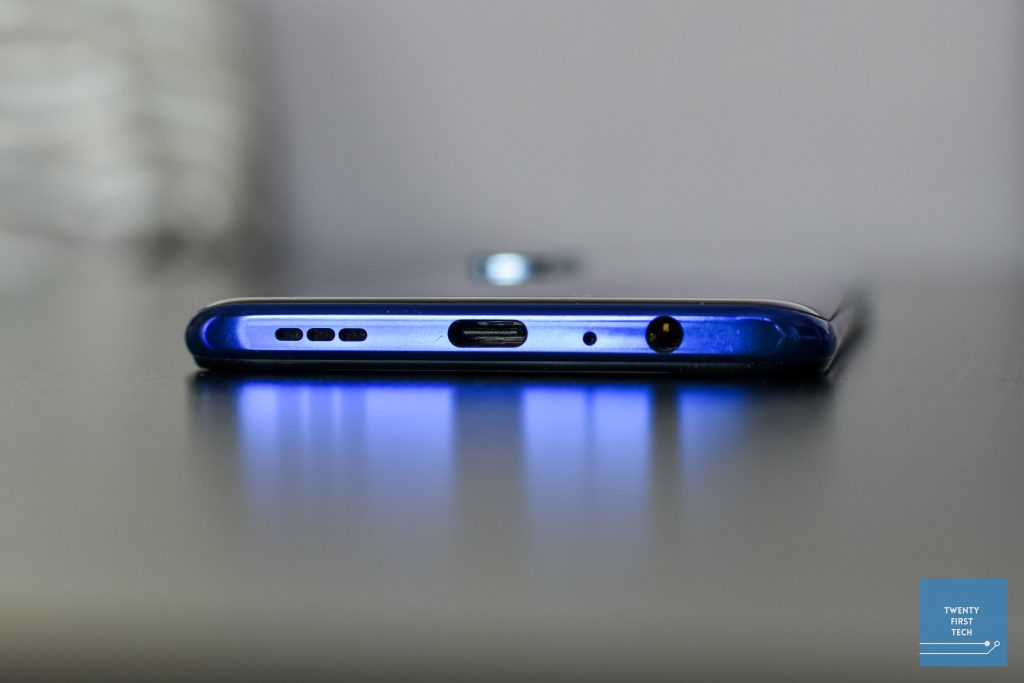
Ergonomically, this is one of the more comfortable phones I’ve held in a while. I’ve noticed that width is perhaps the most important factor when it comes to phone comfort, and the Reno3 Pro, in my opinion, nails this. That being said, the phone feels a little top heavy, which can be an annoyance to some.
As for audio, there’s a 3.5mm headphone jack (wow!) and a single bottom-firing speaker that gets really loud. It’s a good speaker though you shouldn’t expect a lot of bass from it. I will once again lament the fact that single bottom-firing speakers are too easy to cover by accident and I wish that all phones had stereo speakers.
Display
The display is a 6.4″ FHD+ Super AMOLED with a tall aspect ratio of 20:9. Unfortunately there’s no high refresh rate like with the Realme 6; just regular old 60Hz here. But it is a good AMOLED display nonetheless. It gets ridiculously bright outdoors (500 nits with a boost of up to 800 nits) and comfortably dim at night.
Colour accuracy, however, isn’t stellar. Whites have a noticeable blue tint. And unfortunately, there doesn’t seem to be any colour presets available other than a simple colour temperature slider. It’s not a dealbreaker though, and you probably wouldn’t notice it unless viewing it next to a more colour-accurate screen.
My main issue with the display is the dual selfie camera. OPPO had opted for a pill-shaped cutout, which takes up a lot of space in the top left corner, where your notification icons should be. The secondary camera isn’t even all that useful. It’s not an ultrawide lens like on the Pixel 3, and it’s also not an IR sensor like on the Huawei P40. It’s simply a depth camera for selfie portraits. I would’ve much preferred a single selfie camera, or the old signature Reno sharkfin pop-up camera.
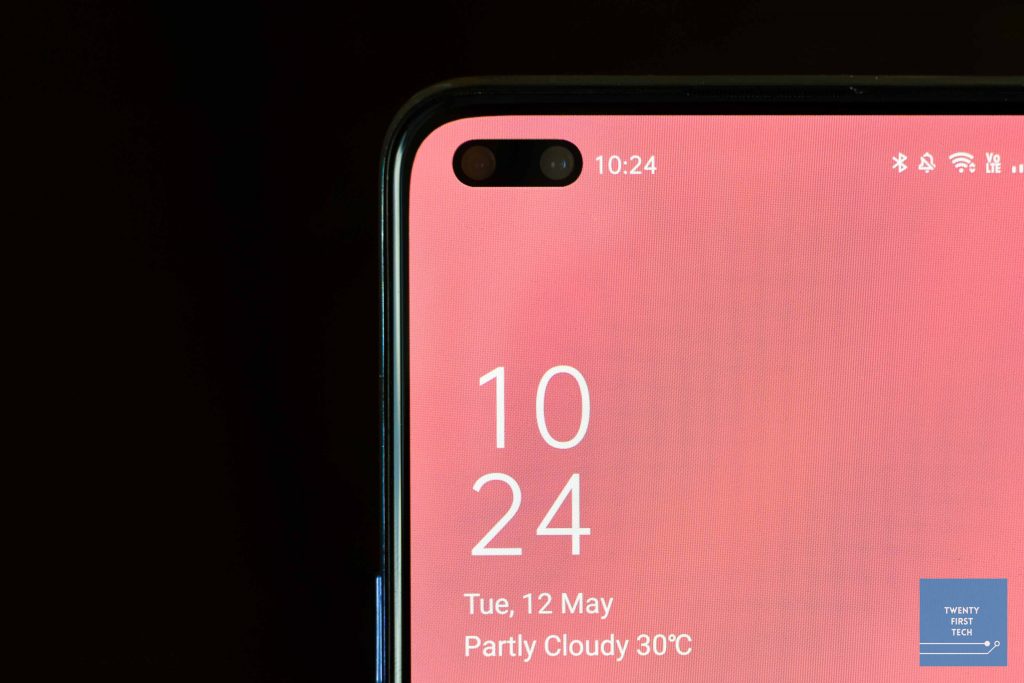
The fingerprint scanner is an optical in-screen unit, and it is fast and accurate, though not the fastest I’ve seen. It’s still faster than the first generation unit on my OnePlus 6T though. Face unlock is here too, which is also extremely fast. I find myself using the face unlock most of the time.
Another minor annoyance is that the brightness slider is highly non-linear. The first 10% of the brightness slider seems to control brightness up to 60%. It can thus be annoying getting the brightness up to a specific level in dark environments.
Software & battery life
I was particularly interested in OPPO’s software going into this review. It plays a big role in answering the question on whether or not OPPO phones are a viable alternative to OnePlus phones, and I have some thoughts.
For the most part, I enjoy the UX presented in ColorOS. The OPPO Reno3 Pro comes with ColorOS v7 which is based on Android 10. There’s native support for Android 10’s gesture navigation and dark mode. Icons are clean and colourful, and menus and settings are laid out neatly and intuitively.
There is a light green accent that is prevalent throughout the UI, and as far as I know there is no way to change it. I find it pleasant to look at though, so I am happy with it.
The similarities with OnePlus’ OxygenOS are quite striking. To the left of the home screen there is something called Smart Assistant (a la Shelf) which displays things like the weather, steps taken, and shortcuts to apps. I never use this on OnePlus phones and I don’t find it useful here either. Thankfully, it can be removed from the home screen. Other similarities include convenience features like screen-off gestures and the ability to swipe down on the home screen to pull down the notification shade.
ColorOS even has some conveniences that OxygenOS lacks, like a 3-finger gesture to open split screen multitasking, and a sidebar that allows you to quickly launch into other apps.
Overall, I am surprisingly pleased with the software experience, and wouldn’t mind using it as my daily driver. The main question that remains is software support. I have no idea if OPPO is as good as OnePlus in terms of providing timely software updates, though I did get an update out of the box that brought the March security patch.
Battery life on the phone is excellent. I consistently got more than 5 hours of screen on time with the phone, and this is after a lot of gaming, Spotify streaming, and even video calls. Oh, and the bundled 30W VOOC charger charges the phone from 0 to 67% in just 30 minutes. And it’s compatible with OnePlus and Realme phones!
Performance
As mentioned at the start of the review, performance from the Helio P95 chipset was a concern. And it seems like my concerns were justified.
First, some benchmarks. On Geekbench 5, the Reno3 Pro scored 403 on single-core and 1,500 on multi-core (516 and 2,348 on my Snapdragon 845 OnePlus 6T). This is comparable to flagships from 3 years ago, and the single-core performance in particular is rather respectable.
On the Geekbench compute test, however, the app crashes after several minutes when using the OpenCL API. On Vulcan API it scored a measly 115, which is so low that I thought there must be something wrong with the test. But I ran the test again and got the same result.
On 3D Mark Sling Shot Extreme, the phone scored 1,243, with 1,087 on graphics and 2,506 on physics (4,817, 5,244 and 3,748 on my OnePlus 6T).
Looking at the benchmarks, it seems like the main area where the Reno3 Pro struggles is in graphics. And unfortunately, this shows in real-world performance.
3D games like Sky: Children of the Light or Gumslinger show frequent frame rate drops, even on low settings. Sky experiences visual glitches as well.
You even see animation stutters on things like Telegram stickers and Facebook emojis. Loading a Google result which has several videos and images lags the phone.
Surprisingly, the phone handles Asphalt 9 decently well, which leads me to think that there may be some optimisation issues, especially since Geekbench crashes.
If you don’t do any gaming and don’t mind the occasional slowdown in animations, then the Reno3 Pro is a decent performer in terms of CPU. Otherwise, you should steer clear of this phone.
Honestly, at the price point of S$749, I’d expect much better performance. You can get phones like the OnePlus 7T for roughly the same price (S$759) now, which has the far superior Snapdragon 855+.
At this price, and with this performance, it’s not looking good for the Reno3 Pro.
Cameras
The Reno3 Pro comes with 4 cameras on the back: a 64MP main, 8MP ultrawide, 13MP telephoto, and 2MP depth.
Photos from the main camera default to 16MP as 4 pixels are binned to one. You have the option to switch to the full 64MP but I wouldn’t bother with it since 16MP is plenty sharp and 64MP would lead to worse low light performance.
In daylight, image quality from the main camera is good. Dynamic range is surprisingly good, colours are punchy and accurate, and there’s plenty of detail. Nothing to complain about here.
Dynamic range on the ultrawide and telephoto cameras aren’t as good but still decent. There is some noticeable softening around the edges of the ultrawide shots, but this is to be expected. Colours seem to shift quite a bit between the 3 focal lengths, but I’m not sure if this is because the scene changes so drastically with focal length changes or if the callibration across the 3 cameras is inconsistent.
At night, images from the main camera are pleasant, if not a bit over-sharpened. There is adequate smoothing to suppress noise, but it’s not excessive. Details are well preserved in the shadows. Image quality suffers for the other 2 cameras, with more noise and less detail preserved, but this is to be expected.
There is a dedicated night mode, but it appears to overexpose night time images while sacrificing detail. Just look at the images below. The detail in the fur is completely lost when night mode is turned on. I’d stick to regular mode on the main camera for low-light shots, and probably turn up the exposure in post.
Overall, image quality for the main camera is good, and decent for the ultrawide and telephoto.
Miscellaneous
Some other miscellaneous things I noticed:
- The vibration motor feels very cheap and “buzzy”.
- The always-on display disappears after awhile, and I can’t find a way to fix this. Disabling battery optimisations doesn’t help.
- No universal “hide notification content” toggle for lockscreen notifications. Instead you have to toggle this for individual notification categories, which for Telegram, boils down to your chats with individual users. And it toggles itself off after awhile, which means you have to manually go deep into settings to re-toggle it every day.
- Screen-off “V” gesture turns the flashlight on but not off. Why?
Pricing & conclusion
Let’s recap some of the pros and cons:
Good
- Solid plastic build, comfortable in the hand
- Extremely bright and vivid FHD+ AMOLED display
- Excellent battery life with very fast charging
- Good main camera, decent ultrawide and telephoto cameras
- Good software with many similar features to OnePlus, and some bonus features as well
Bad
- Performance is subpar at this price point, especially in graphics
- Dual hole punch cutout takes up too much space on the display without any added benefit other than portrait selfies
- No NFC
- Price
At the end of the day, I enjoyed my time with the OPPO Reno3 Pro due to its ergonomics, display and battery life. But I find it difficult to recommend this phone for its asking price of S$749, especially due to its poor performance.
The truth is that for S$749, you can get phones that offer far superior performance, a more premium glass and metal build, or even 90Hz screens. And in the case of the OnePlus 7T, you can get all of the above (and NFC) for just $10 more!
If you’re platform agnostic, it is worth noting that you can get the new iPhone SE for cheaper. That phone has the A13 Bionic chip which is several times faster than the Helio P95 on the Reno3 Pro, has wireless charging, and an IP67 water resistance rating.
If you’re keen on an OPPO phone, I might suggest the OPPO Reno3 (non-Pro) instead. The Reno3 is basically the same phone save for the main camera, and it comes at a much more palatable S$499 price point.
Even cheaper is the Realme 6 at S$399. It actually offers slightly better performance, and a 90Hz display, albeit an LCD instead of an AMOLED. It’s also got the same 30W VOOC charging technology.
So even though I liked the phone, I simply can’t recommend it, not at this price anyway. For the money, it isn’t hard to find something better. Or save yourself a few hundred dollars and get something similar for less.
As for whether or not an OPPO phone can replace OnePlus, I think so. Other than some of the bugs that I mentioned, the software experience was pleasant enough that I wouldn’t mind using it as my daily driver. This specific phone just falls a little bit short.
Remember that when purchasing on Lazada you can use Shopback to get cashback on your purchase to save yourself some money.
Liked this review? Follow us on Facebook, Twitter or Instagram for more updates!

